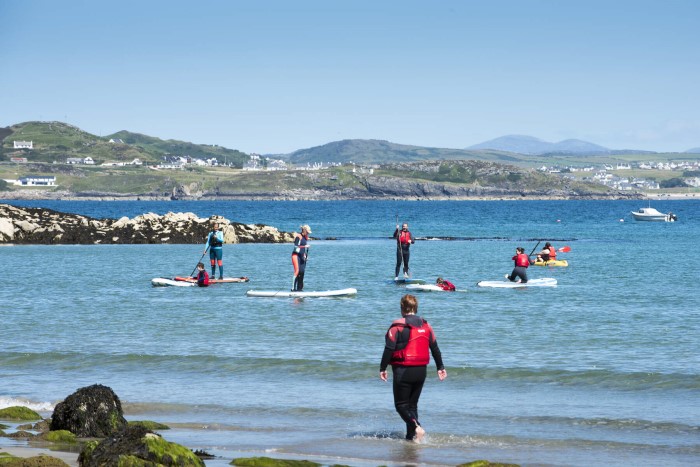
County Donegal, located in the northwest of Ireland provides a wealth of opportunities to participate in and enjoy outdoor recreation activities. Predominantly rural in character, Donegal covers an area of 4,801 square km2, and is the fourth-largest County in Ireland. It is nationally recognised for its rugged diverse landscape and extensive indented coastline (c.1,132km).
The coast together with an abundance of mountains, hills, forests, loughs, rivers, blanket bogs, beaches and islands provides a range of rich recreational opportunities for both local communities and visitors alike. This precious environment is informed by a unique and distinctive cultural heritage.
The Donegal Gaeltacht, including the island community, is the largest Irish speaking community in Ireland and occupies almost a third of the County. It constitutes a significant natural resource for recreational opportunities.
Donegal is home to the Sliabh Liag cliffs located in the south of the County, among the highest seas cliffs in Europe, Ireland’s highest sea arch, Pollet Arch in Fanad, Ireland’s most northerly point, Malin Head, and Glenveagh National Park, which is one of only six National Parks in Ireland. Donegal’s resource value and high-quality environment is reflected in the significant number of environmental designations across the County (approximately 30% of the County is designated) including, Natural Heritage Areas, National Park, Ramsar sites, Nature Reserves, Geological Heritage Sites and Special Protected Areas and Special Areas of Conservation.
In addition Donegal has numerous designated blue flag beaches and blue flag marinas, together with green coasts, an award made by the Foundation for Environmental Education and operated by An Taisce.
The landscapes and waterscapes of County Donegal currently present rich opportunities to explore and engage with the outdoors, and there is a now an evolving recognition and greater understanding that the resource base which provides these opportunities is finite and therefore an informed and balanced approach is required to ensure that the very resource which provides the opportunities for recreation and enjoyment, is protected and managed appropriately.